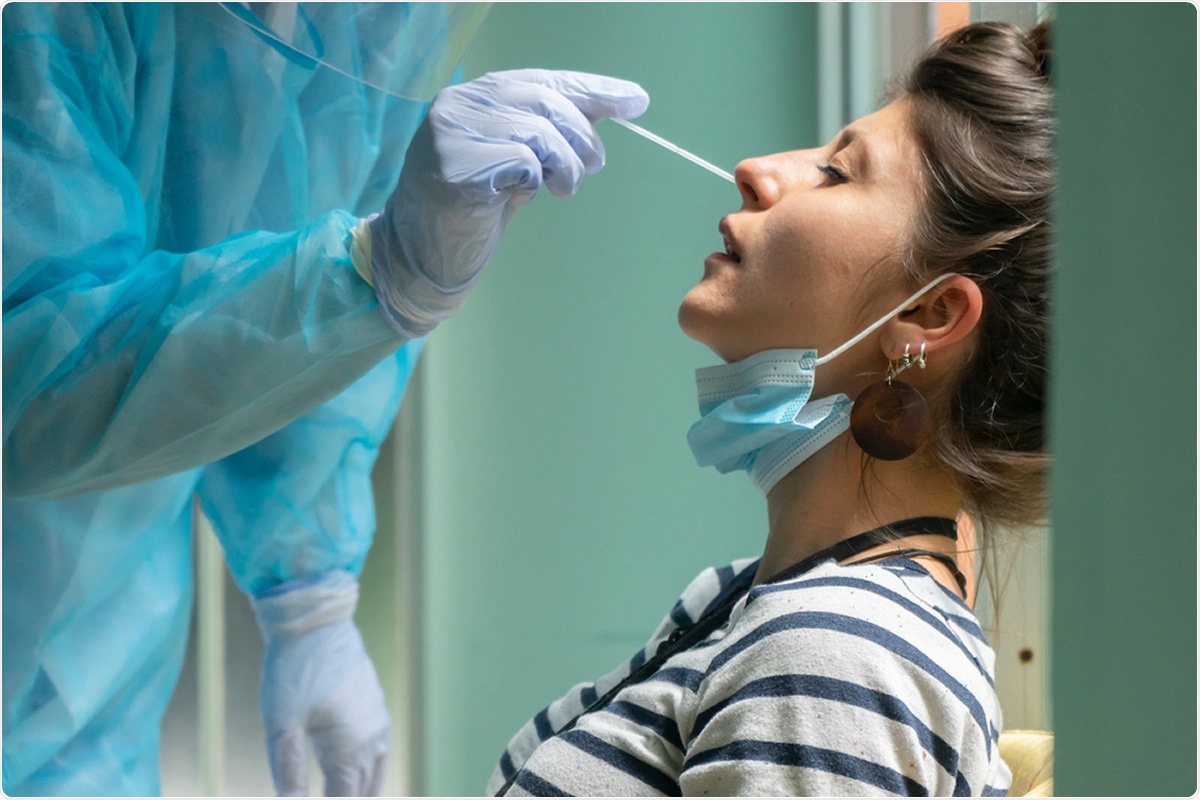86 percent of the UK's COVID-19 patients have no symptoms
Download PDF Copy
By Angela Betsaida B. Laguipo, BSN Oct 9 2020
Many people who contract the severe acute respiratory syndrome coronavirus 2 (SARS-CoV-2), the virus that causes the coronavirus disease (COVID-19), develop only mild and moderate symptoms. A small fraction of those infected develop severe symptoms, which usually occur in people who are at higher risk due to comorbidities.

Study: Three Quarters of People with SARS-CoV-2 Infection are Asymptomatic: Analysis of English Household Survey Data. Image Credit: Noiel / Shutterstock
Now, a new study by researchers at the University College London revealed that 86 percent of people who tested positive for COVID-19 did not have virus symptoms, such as cough, fever, and loss of taste or smell. The study findings, collected by the Office for National Statistics, the U.K. statistics body, highlight the role of asymptomatic patients in the spread of the virus.
The data collecting body gathered information about coronavirus testing from thousands of British households during the pandemic—the asked households whether they developed symptoms or not.
“To reduce transmission of SARS-CoV-2, it is important to identify those who are infectious. However, little is known about what proportion of infectious people are asymptomatic and potential “silent” transmitters. We evaluated the value of COVID-19 symptoms as a marker for SARS-CoV-2 infection from a representative English survey,” the authors wrote in the paper.
COVID-19 symptoms among infected people
The study, published in the journal Clinical Epidemiology, utilized data from the Coronavirus Infection Survey, an extensive population-based survey looking at the link between coronavirus symptoms and test results.
Over 36,000 people living in Northern Ireland, England, and Wales were included in the study, who were tested from April to June. Of the total participants, 0.32 percent of 115 people had a positive test result. From there, the team focused on these individuals to determine specific symptoms.
Of the 115 people who tested positive with SARS-CoV-2, 16 or 13.9 percent reported symptoms, while 99 people or 86.1 percent of the patients, did not report any specific symptoms on the day of the test.
Further, 27 or 23.5 percent were symptomatic, and 88 or 76.5 percent did not manifest symptoms on the day of the test.
“COVID-19 symptoms are poor markers of SARS-CoV-2. Thus, 76.5% of this random sample, which tested positive reported no symptoms, and 86.1% reported none of those specific to COVID-19. A more widespread testing program is necessary to capture “silent” transmission and potentially prevent and reduce future outbreaks,” the team concluded in the study.
Related Stories
How an ignored white blood cell may cause COVID-19 deaths
23 SARS-CoV-2 strains circulating in the Philippines
The researchers believe that the study findings may provide critical information for ongoing and future testing programs.
“The fact that so many people who tested positive were asymptomatic on the day of a positive test result calls for a change to future testing strategies. More widespread testing will help to capture “silent” transmission and potentially prevent future outbreaks,” Professor Irene Petersen from UCL Epidemiology & Health Care, said.
“Future testing programs should involve frequent testing of a wider group of individuals, not just symptomatic cases, especially in high-risk settings or places where many people work or live close together such as meat factories or university halls. In the case of university halls, it may be particularly relevant to test all students before they go home for Christmas,” the added.
He also explained that pooled testing could impose a widespread testing strategy, where multiple tests can be grouped into one analysis. This way, they could save time and money rather than doing individual tests.
COVID-19 situation
The United Kingdom reports a second wave of the coronavirus outbreak in the country, which topped more than 564,000 cases and at last 42,000 deaths. Health minister Matt Hancock warned that the U.K. is reporting skyrocketing cases. On Oct. 8, more than 17,540 new daily COVID-19 cases were recorded, which is up by more than 3,000 from the previous day.
Also, 77 people had died after testing positive for COVID-19 within 28 days. The number of patients hospitalized due to the infection increased to a whopping 3,044 from 2,944 the previous day.
Globally, the number of cases has surpassed 36.44 million and the death toll has now reached over 1 million.
Sources:
University College London. (2020). https://www.ucl.ac.uk/news/2020/oct/symptoms-covid-19-are-poor-marker-infection
COVID-19 Dashboard by the Center for Systems Science and Engineering (CSSE) at Johns Hopkins University (JHU) - https://gisanddata.maps.arcgis.com/apps/opsdashboard/index.html#/bda7594740fd40299423467b48e9ecf6
Journal reference:
Peterson, I., and Phillips, A. (2020). Three-Quarters of People with SARS-CoV-2 Infection are Asymptomatic: Analysis of English Household Survey Data. Clinical Epidemiology. https://www.dovepress.com/three-quarters-of-people-with-sars-cov-2-infection-are-asymptomatic-an-peer-reviewed-article-CLEP

Written by
Angela Betsaida B. Laguipo is a nurse by profession and a writer by heart. She graduated with honors (Cum Laude) for her Bachelor of Nursing degree at the University of Baguio, Philippines. She is currently completing her Master's Degree where she specialized in Maternal and Child Nursing and worked as a clinical instructor and educator in the School of Nursing at the University of Baguio.
No comments:
Post a Comment